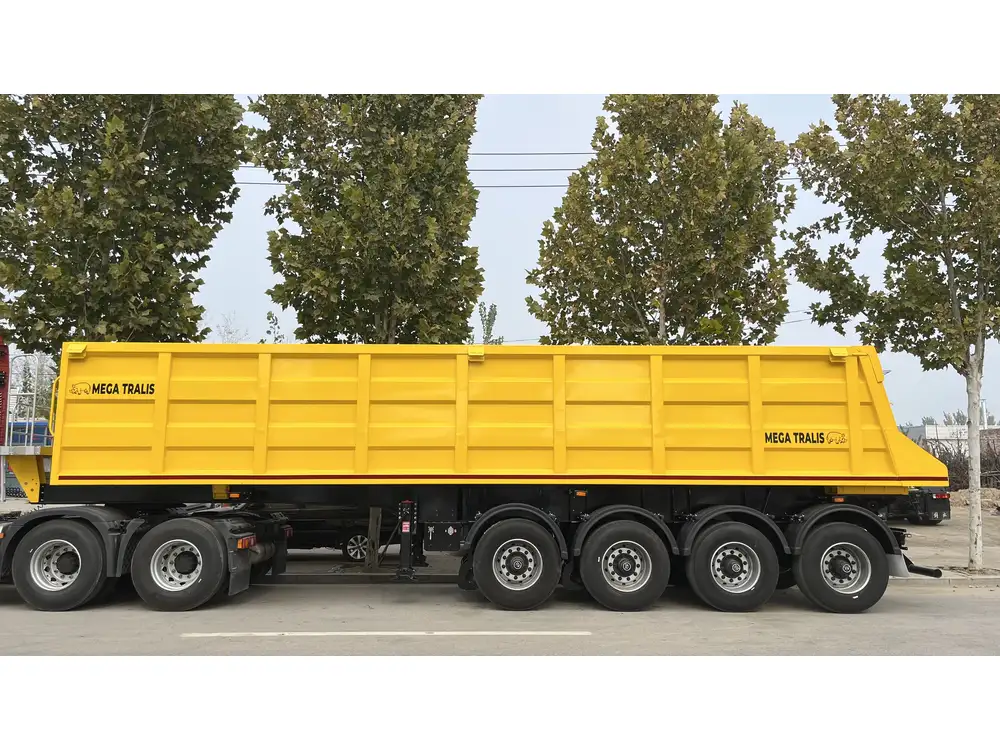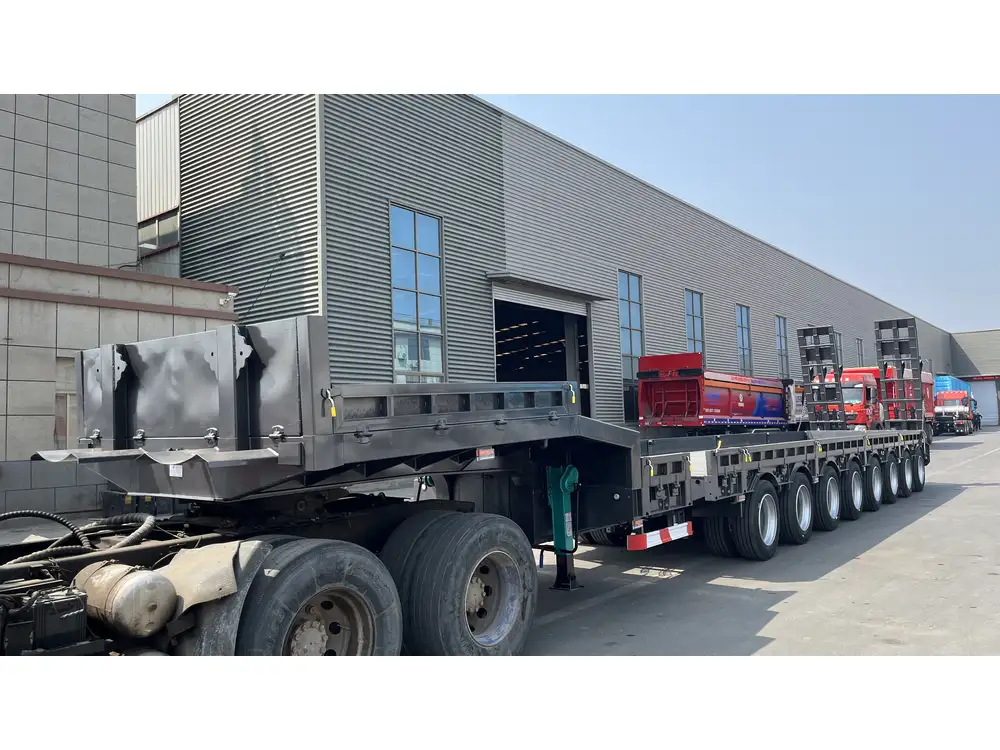Introduction to Dump Trailer Measurements
Dump trailers are essential tools in the construction and landscaping industries, facilitating the efficient transport of materials. However, potential buyers often grapple with understanding the capacity of these trailers, especially when comparing dimensions like length to volume. Among the various sizes available, a 14-foot dump trailer is a common choice, and discerning how many cubic yards it can accommodate is crucial for both logistics and budgeting.
Therefore, we will thoroughly investigate the dimensions, volume calculations, and practical applications to provide clarity on this topic.
Calculating the Volume of a 14-Foot Dump Trailer

Step-by-Step Calculation
- Understanding Basic Dimensions: A typical 14-foot dump trailer has a width of 6 to 8 feet and a height of around 2 to 4 feet.
- Determining Cubic Feet: The volume in cubic feet can be calculated using the formula: [ \text{Volume} = \text{Length} \times \text{Width} \times \text{Height} ]
- Conversion to Cubic Yards: Since there are 27 cubic feet in a cubic yard, the volume in cubic yards is found by dividing the total cubic feet by 27.
Example: Determining the Capacity
Let’s take a common dimension for a 14-foot dump trailer:
- Length: 14 feet
- Width: 7 feet (average width)
- Height: 3 feet (typical side height)
Volume Calculation:
[ \text{Volume} = 14 \, \text{ft} \times 7 \, \text{ft} \times 3 \, \text{ft} = 294 \, \text{cubic feet} ]
Cubic Yards Calculation:
[ \text{Cubic Yards} = \frac{294 \, \text{cubic feet}}{27} \approx 10.89 \, \text{cubic yards} ]Thus, a 14-foot dump trailer can approximately carry about 10.89 cubic yards of material.
Practical Applications of a 14-Foot Dump Trailer
Common Uses in Various Industries
The versatility and capacity of a 14-foot dump trailer make it suitable for numerous applications, including:
| Industry | Application | Typical Materials |
|---|---|---|
| Construction | Site clean-up and debris removal | Dirt, rubble, concrete, gravel |
| Landscaping | Transporting soil, mulch, and plants | Soil, mulch, plant materials |
| Agriculture | Hauling feed, crop residues, and fertilizers | Animal feed, organic matter |
| Waste Management | Residential and commercial waste disposal | General waste, yard waste |
| Road Maintenance | Clearing roads and transporting materials | Asphalt, gravel, stones |
This table illustrates the range of materials a 14-foot dump trailer can efficiently transport, helping industries streamline their operations.

Factors Influencing Capacity
Density of Materials
The density of the loads can significantly affect how much a trailer can carry in terms of weight. For instance, while a trailer might have a volume capacity of nearly 11 cubic yards, the weight it can accommodate depends on the type of material loaded, affecting the maximum load limits.
Common Material Densities:
- Topsoil: Approximately 1,200 pounds per cubic yard
- Mulch: Roughly 800 pounds per cubic yard
- Gravel: Can range from 1,500 to 2,500 pounds per cubic yard, depending on the size
- Concrete: Approximately 3,600 pounds per cubic yard

Legal Load Limits
It is critical for operators to remain cognizant of legal load limits to avoid penalties and ensure safety. In the United States, the total weight limit for a single axle vehicle typically caps around 20,000 pounds, while the combined vehicle weight including trailer can reach upwards of 80,000 pounds. Each state may have its own regulations; thus, understanding local laws is paramount.
Tips for Efficient Usage of Dump Trailers
Optimizing Loads
- Distribute Weight Evenly: Ensuring an even load helps maintain control and prevents accidents on the road.
- Avoid Overloading: Know your trailer’s maximum weight capacity to prevent damage or fines.
- Secure Loads: Properly tied down loads prevent shifts during transit, reducing the risk of accidents.

Maintenance Considerations
- Regular Inspection: Check tires, brakes, and lights to ensure safe operation.
- Clean After Use: Removing debris protects the integrity and longevity of the trailer.
Popular Features of 14-Foot Dump Trailers
Types and Customizations
When selecting a 14-foot dump trailer, consider various features and types that could enhance user experience and operational efficiency:
| Feature | Description |
|---|---|
| Hydraulic Lift Systems | Facilitates easier unloading of materials, enhancing efficiency. |
| Drop Sides | Increase versatility for various loading options. |
| Heavy-Duty Frames | Provides enhanced durability for demanding tasks. |
| Tarp Kits | Helps cover loads during transport, preventing spillage. |
| Ramps | Offer loading and unloading ease for equipment and materials. |

Choosing the Right Model
When in the market for a dump trailer, consider the following aspects to ensure the best fit for your needs:
- Weight Rating: Ensure the model can handle the weight of the materials you’ll be transporting.
- Build Quality: Look for solid construction that offers durability.
- Towing Compatibility: Ensure your towing vehicle can handle the trailer’s weight.
Conclusion: Making Informed Decisions
A 14-foot dump trailer offers roughly 10.89 cubic yards of material capacity, making it an invaluable asset for various industries from construction to waste management. By understanding the calculations of volume and weight distribution, as well as the different applications and features available, operators can optimize usage and significantly enhance operational efficiency.
Armed with this extensive knowledge, users can make informed decisions about their trailer selection and usage, ensuring that they maximize their investment while adhering to safety and legal standards.
This comprehensive article serves to clarify the often-confusing metrics associated with dump trailers, ultimately aiding readers in their quest for effective solutions in material transport. Whether seeking to purchase a new trailer or optimize the usage of an existing one, having an informed understanding will lead to increased productivity and better outcomes in any project.



